News
Altcoin News
Altcoin News
Browse all Altcoin related articles and news. The latest news, analysis, and insights on Altcoin.
A New Era for XRP: ProShares' UXRP ETF Launches on July 18
An exciting development is brewing for XRP in the crypto world. Ripple's native token, XRP, is getting its first leveraged XRP ETF, which will be listed on the exchange on July 18th. The Ultra XRP ETF (UXRP), launched by ProShares, has received approval from the US Securities and Exchange Commission (SEC) and is preparing to list on the New York Stock Exchange's NYSE Arca. This could be a potential turning point for the XRP ecosystem.The first leveraged XRP ETF is unveiledProShares' UXRP ETF aims to offer investors a leveraged investment product that targets twice the daily price movements of XRP. This creates an opportunity for investors looking to capitalize on short-term fluctuations in the XRP price to take positions without directly owning the token. Of course, such leveraged products, which recalibrate daily, carry additional risk; however, the growing adoption of XRP, especially in cross-border payments, makes its long-term prospects strong. ProShares is also launching a similar product for Solana (SOL), the Ultra Solana ETF (SLON). CEO Michael L. Sapir said, “As cryptocurrencies gain wider adoption, investors are turning to next-generation blockchain technologies like Solana and XRP. SLON and UXRP will help investors overcome technical challenges by providing leveraged access to these assets.” A New Gateway for Institutional InvestorsProShares is now leveraging its experience with Bitcoin and Ethereum futures ETFs to XRP. The UXRP ETF provides institutional investors with regulated exposure to XRP without the complexities of direct crypto custody. This could facilitate XRP's wider acceptance in mainstream financial markets.Another noteworthy development ahead of the ETF launch is the on-chain whale activity. The number of wallets with a balance of 1 million XRP or more has reached a record high. This growing accumulation indicates a significant increase in investor confidence and the potential for a significant capital inflow into the market with the ETF.Ripple Lawsuit and Price ExpectationsIn addition to all these developments, the ongoing lawsuit between Ripple and the SEC is also nearing its conclusion. A potential settlement and the official launch of the ETF could put significant upward pressure on the XRP price. In other words, the UXRP ETF is not only a new investment product; it could also be a potential catalyst for the XRP ecosystem.This move by ProShares could pave the way for leveraged ETFs not only for XRP but also for the overall crypto market. Starting July 18th, both institutional and individual investors will have new access to XRP.
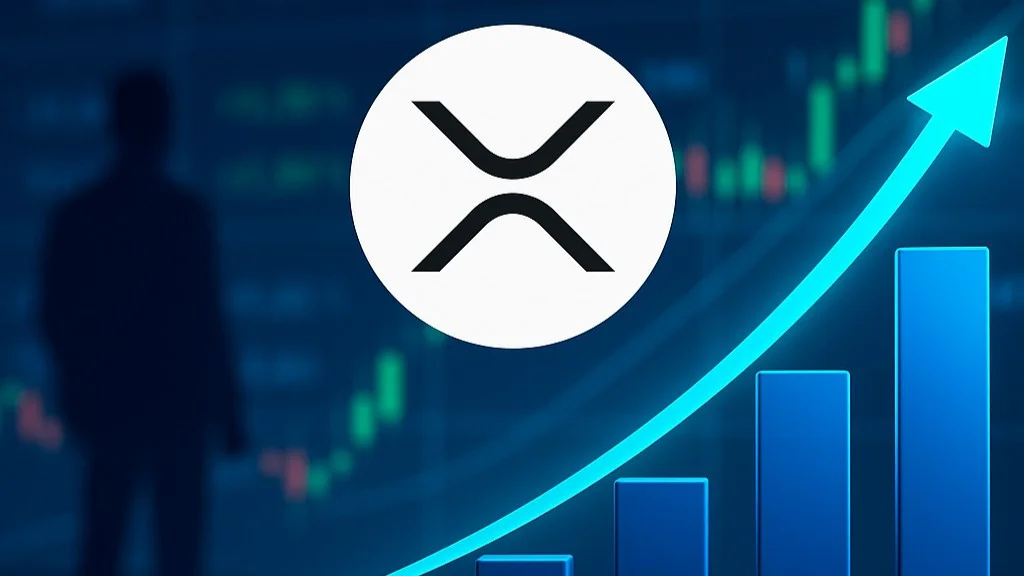
ARB Comments and Price Analysis July 17, 2025
ARB Technical AnalysisArbitrum (ARB) has seen significant developments recently. One of the most remarkable was PayPal’s announcement that it will expand its stablecoin, PYUSD, to the Arbitrum network. This development is notable as it expands Arbitrum’s usage areas and demonstrates institutional confidence in this ecosystem. The total locked value (TVL) on the Arbitrum network has surpassed $2.5 billion with increasing institutional participation. Meanwhile, approximately 92.6 million ARB tokens were unlocked today, which accounts for a new supply of approximately $37 million. The increase in institutional interest and the impact of this unlocking on the price are both being closely monitored by investors.Now, let’s see what the technical chart tells us. Double Bottom Structure The double-bottom formation indicates a reversal from the lower areas as analyzed previously. The price of the coin shifted direction after bouncing twice from the order block (0.26–0.25 area) – see the blue range. The breakout of the resistance level of $0.34 suggests that the fall may be over technically. Also, holding above MA200 supports the upward movement of the price.The price has broken above the short-term descending trend and surged to the key resistance area of $0.4233–$0.4532. If the price can break above this resistance area and see daily closings, the levels $0.54, $0.70, and psychological level $1 could be the next targets ahead.These analyses, not offering any kind of investment advice, focus on support and resistance levels considered to offer trading opportunities in the short and medium term according to the market conditions. However, the user is responsible for their own actions and risk management. Moreover, it is highly recommended to use stop loss (SL) during the transactions.

Trump-Backed Crypto Project WLFI Opens to Public Access
World Liberty Financial (WLFI), the cryptocurrency project supported by US President Donald Trump, has until now been a platform accessible only to "accredited investors." However, this changed after Wednesday's vote. Now, ordinary users can also purchase the WLFI token from exchanges.This Ethereum-based project aims to operate in the decentralized finance (DeFi) space. Essentially, it aims to offer services such as borrowing and lending with cryptocurrency. WLFI is defined as the native governance token of this ecosystem. This means token holders can vote on decisions regarding the platform's future. The token can also be bought and sold on exchanges, just like other cryptocurrencies. According to a statement published on World Liberty Financial's website, this vote is considered "a significant milestone in the project's development." The statement stated, "Due to the strong demand from community members and our business partners, we believe the time is right for WLFI to become tradable and to begin a new era of participation." While it hasn't yet been announced which cryptocurrency exchanges it will be traded on, official sources for the project indicate that the token will be available soon. Some of these tokens, previously available only to large investors, are now being unlocked. Others will be subject to longer-term unlock schedules.Trump Directly Involved in the WLFI ProjectAnother element that makes the project noteworthy is the Trump family's direct involvement in the project. WLFI was first announced in 2024 by Donald Trump's son, Eric Trump. The project's founders include veterans in the DeFi field such as Chase Herro and Zak Folkman, as well as the Trump and Witkoff families.However, the project's political connections have sparked some controversy in Washington. Some Democratic lawmakers, in particular, argue that this initiative, launched after Trump's term, poses a serious ethical conflict of interest. The Trump family's millions of dollars in revenue from token sales is a key argument in these criticisms. Indeed, in a recent financial disclosure, it was revealed that Donald Trump had made a whopping $57.3 million in profits from token sales in the project. Additionally, TRON founder Justin Sun stated that he would receive $100 million in TRUMP coins. To date, he has purchased $26.4 million in coins.World Liberty Financial has not yet officially launched. The launch date for crypto lending and borrowing services remains unclear. However, the public launch of the WLFI token may signal an acceleration of this process.
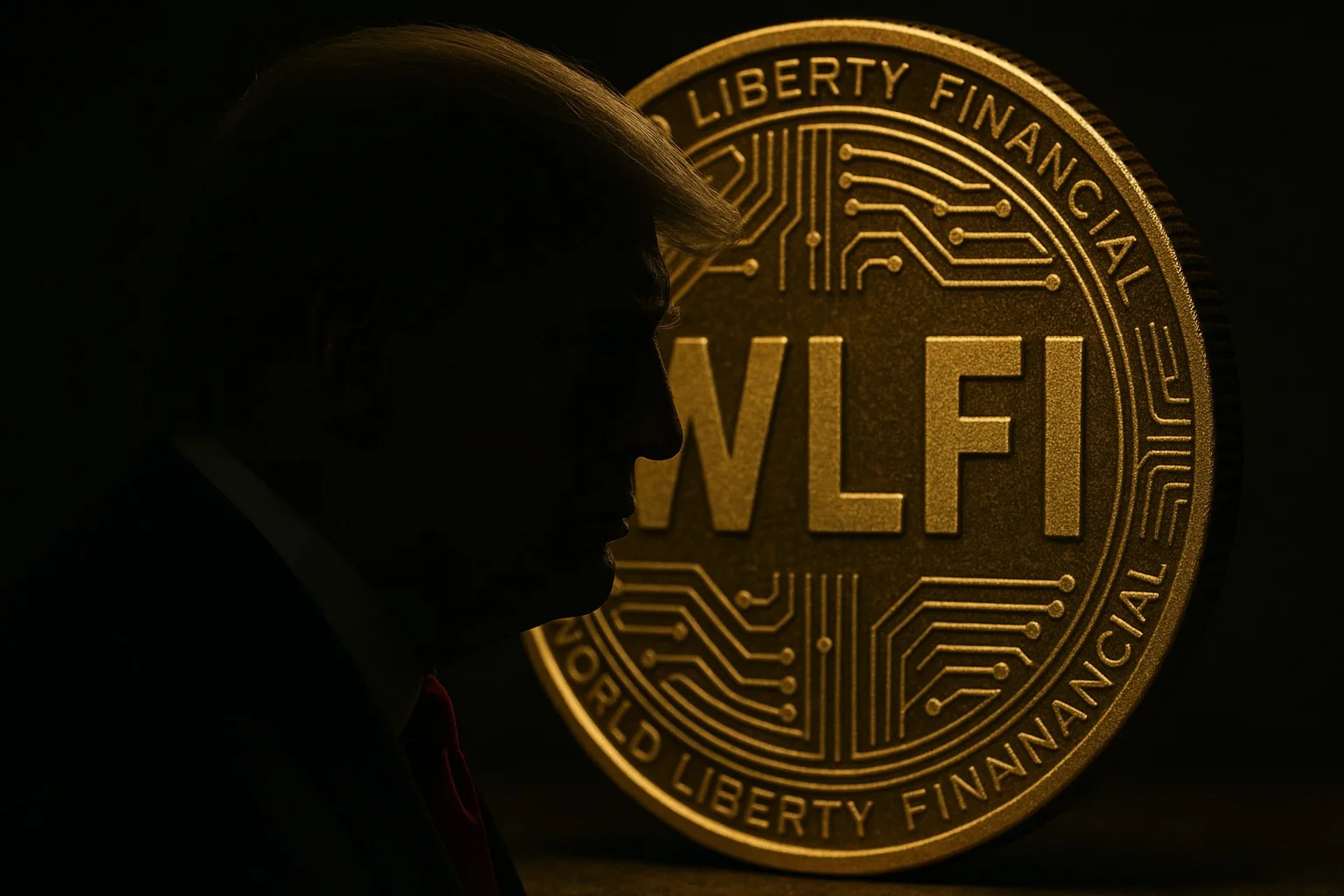
SOL Comment and Price Analysis July 16, 2025
SOL Technical AnalysisSolana has been trading within an ascending channel since the end of 2023. Looking at the broader picture, both the upper and lower boundaries of this channel have held effectively so far. Moreover, the price has recently been consolidating within a narrower range. Rising Channel Structure This horizontal pattern between $140 and $170 appears to be forming a triangle. A key horizontal resistance level lies at $167.87, which also intersects with a minor downtrend line. In summary, the price is approaching a critical breakout zone.Currently holding above $163, Solana is attempting to break through this significant resistance. If daily closes are seen above $167, the following Fibonacci-based levels could be targeted:$201.24$233.18$300.00These levels have previously acted as strong resistance zones.In the event of a pullback, the immediate support levels to watch are $146.86 and $140.03. Below these, additional support lies at $128, with the strongest zone between $119 and $122.As long as the ascending channel remains intact, a continuation of the bullish structure is expected. If resistance levels are broken with strong momentum, the $300 region could become a valid technical target.These analyses, not offering any kind of investment advice, focus on support and resistance levels considered to offer trading opportunities in the short and medium term according to the market conditions. However, the user is responsible for their own actions and risk management. Moreover, it is highly recommended to use stop loss (SL) during trades.
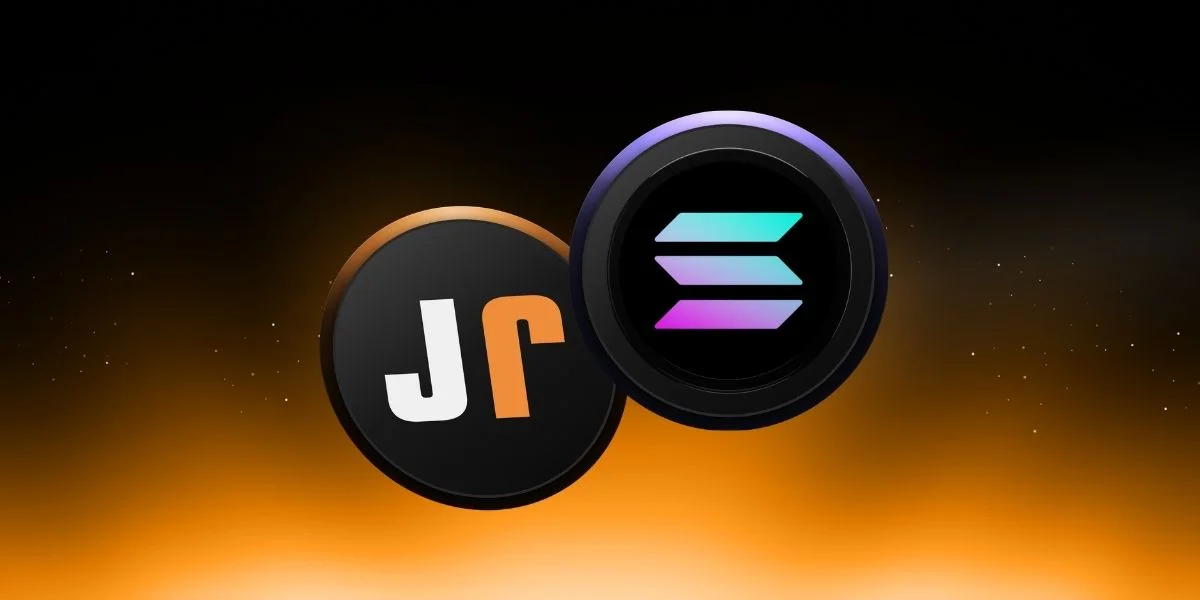
What is Story (IP)?
With the evolution of the internet, storytelling is also transforming. We are no longer faced with a new form of narrative shaped solely by books, TV series, or games, but rather by digital communities, blockchain infrastructure, and decentralized technologies. This is precisely where Story (IP) emerges, offering creative content creators the opportunity to both protect their intellectual property and develop this content more freely in the Web3 world. Simply put: Story (IP) enables a story not only to be told but also to be owned, developed, and even monetized together with the community. So, what does this mean? How does story tokenization work? Why is it important? Moreover, how does a story live on-chain? In this guide, we will thoroughly explore what Story (IP) is, how it works, what blockchain infrastructure it uses, and why it offers an important model for creators. Story (IP) is a Web3 protocol that enables digital content creators to manage their intellectual property rights on the blockchain. This protocol transforms creative works such as stories, characters, images, text, and music into NFTs (ERC-721) on-chain (tokenization), making author ownership and terms of use programmable. When users register their works through Story, they can set automatic licensing and copyright rules, allowing everyone to transparently see who owns what rights to the works. Ultimately, Story aims to adapt copyrights to today's Web3 world of content management and ownership by securing content intellectual property on the blockchain.Definition and Origin of Story (IP)Story Protocol (Story IP for short) is a Web3 project offering an open IP infrastructure. Its goal is to transform digital content into programmable IP assets on the blockchain. Story provides an IP repository to track the evolution of works by recording every stage of the creative process. Just as GitHub tracks software versions, Story tracks forks of stories, images, and sounds and transparently records the links between works. This allows copyrights to be transferred to the blockchain; Authors register their creations as intellectual property, predetermine their terms (commercial use, derivative work permissions, revenue sharing, etc.), and secure them through the code.One of Story's most striking definitions is its positioning itself as the "GitHub of IP." So, what exactly does this mean? GitHub, well-known to software developers, is a platform for tracking the entire history, changes, and versions of a code. Code can be publicly accessible, others can contribute, and different versions of a code can be kept together. Story applies the same logic to creative content, namely intellectual property (IP) assets. A story, character, universe, or scenario—whatever the content—is represented as a token on Story, and just like code on GitHub, its versions can change. This allows transparent tracking of details such as how the content has evolved over time, who contributed what, and which community has more ownership of which version. In short, becoming the “GitHub of IP” enables the decentralized and community-driven management of creative works. Announced in 2023, Story raised over $140 million in a round led by a16z Crypto. When the Story project was first announced, it promised a balance that sounded exciting in the creative world: protecting copyrights while fostering a “remix” culture. These two things often seem at odds. While copyrights focus on preventing unauthorized use of a work, remix culture is based on the idea of taking existing works, transforming them, adding to them, and creating new meanings. Story proposes a hybrid system that combines the two.By tokenizing creative content on the blockchain, the protocol provides transparent and immutable documentation of each work’s original form—much like an NFT. This allows for the record of who first created a story or character to be fixed on-chain. On the other hand, it also leaves room for remixing, or reinterpretation, of this content. Remixers can reuse content within established rules and licenses, without completely excluding the rights holders of the original work. These processes are not only creative but also economic: revenue generated from remixed content can be returned to the original creators as a share, as defined in the system. Thus, Story gives creators not only the right to say, "This is my work," but also the space to say, "This is my work, and I want it to evolve with the community."The History of Story (IP): Key MilestonesStory, the product of a vision aimed at reimagining the future of content creation, has embarked on a remarkable journey since 2023. Although Story's foundations were laid in 2023, it took approximately two years for the mainnet to launch. Let's take a look at the milestones of the Story protocol:The Story protocol was announced. 2023 marked the first public launch of the Story protocol. While the project was still in its infancy, in 2024, Andreessen Horowitz (a16z Crypto), one of Silicon Valley's most influential investment firms, became an early believer in the protocol's potential. In an investment round led by a16z, Story raised $80 million under the name PIP Labs. This investment gave the project a $2.25 billion valuation before its launch, a remarkable figure for content-based Web3 projects. The Story team continued to do so throughout this period. To lay a solid foundation, work began on the Layer 1 (L1) blockchain architecture. Furthermore, development of "licensing modules," one of the protocol's most distinctive features, began during this process. These modules were designed to enable content remixing, revenue sharing, and the definition of terms of use on the blockchain. In short, 2023 was a year in which both the technical and strategic infrastructure for Story was laid.Public testnet launch: Testing processes were initiated with story creator communities and game/studio collaborations. The Story team invited content creators and developers to join the protocol and began early testing. For example, in August 2024, the public testnet called "Iliad" launched, allowing project participants to mint their IP assets and test licenses.Mainnet launch: The Story mainnet (Homer) was officially launched in February 2025. With this launch, the protocol's licensing module was activated, and the infrastructure for IP tokenization was ready. Of the total supply of 1 billion IP tokens, 25% will be released to the mainnet, while the remaining tokens are released over time through an unlocking program. Since then, many stakeholders, including game studios, film production projects, and author collectives, have joined the ecosystem, moving their IP assets to Story and managing their copyrights on the blockchain.Why Is Story (IP) Valuable?Story (IP) protects the rights of content creators and owners much more strongly than traditional methods. Thanks to Story's L1 blockchain, intellectual property becomes trackable and programmable on-chain. For example, creators can register a story or character they create as an ERC-721 NFT, predetermining who owns the asset and how it is used. This automates copyright on the blockchain, establishing a transparent protection and rights defense mechanism against unauthorized use of the work. Some projects on the Story mainnet. Artists and content creators directly participate in remix and revenue sharing systems through the Story protocol. Story's License Module and Royalty Module connect the author with new works derived from their work. Relevant license terms (for example, the obligation to attribution in derivative works or the transfer of a certain share of the revenue generated to the author) are encoded into the protocol as a smart contract. Thus, when a user remixes the work, all these conditions are automatically applied, and the artist receives royalty income. While detecting copyright infringement in the digital environment can be difficult, with Story, since works are identified on blockchains, it becomes clear who contributed where, thus protecting rights claims based on blockchain evidence.Furthermore, Story enables community-based IP management through DAO-based governance. Both a decentralized entity (DAO) and organizations like the Story Foundation play a role in Story's governance. IP token holders gain voting rights based on the number of tokens they stake, allowing them to decide on protocol updates and parameters. This model ensures that control over copyrights is distributed throughout the community. While copyright and producer support issues are prevalent in today's Web3 world, Story overcomes these challenges with its blockchain-focused solutions. As a result, Story (IP) offers creators equitable royalty distribution, flexible licensing, and digital rights management (DRM), offering innovative DeFi-like solutions in the creative economy.The IP token plays a central role in Story's Layer-1 blockchain network. It is used for network operations, governance, and security/staking. All content infrastructure operations (IP asset registration, licensing, royalty distribution) are paid in IP tokens instead of gas fees, and during peak usage, a portion is burned out of circulation. This mechanism has the potential to create a deflationary supply, similar to the EIP-1559 burn model on Ethereum. The total supply is capped at 1 billion IP tokens, and 25% will be unlocked initially, while the remaining tokens remain locked and gradually released over time.Story utilizes PoS (Proof-of-Stake) and PoC (Proof-of-Creativity) consensus mechanisms. IP token holders contribute to network security by staking as validators or delegators. Validators participate in the system with a minimum of 1024 IP stakes, and a small, burnt fee is charged for each staking/delegation/unstaking transaction. Staking tokens both ensures network security and rewards validators. Furthermore, IP token holders can participate in governance votes through the DAO based on their stake. A weighted model can be implemented, such as one vote per token or 1.25 votes per staked token.Furthermore, the "Proof-of-Creativity" mechanism at the heart of the protocol not only prevents unauthorized use but also enables processes such as automated licensing and royalty payments. Users can register their creative content on the blockchain as "IP Assets," which become not only representative tokens but also digital subjects equipped with actionable modules. Modules are small application blocks that automate functions such as permissionless licensing, royalty sharing, or dispute resolution. This structure also allows developers to write their own modules, making Story an extensible IP infrastructure. The licensing process is simplified thanks to the ready-made contract templates and license tokens offered by Story.Who is the Founder of Story (IP)?Story Protocol is developed by two core entities: the Story Foundation (and DAO) and PIP Labs. The project is driven by academics and entrepreneurs. For example, Scott Kominers and Siqi Chen, who hail from academia such as Harvard and MIT, work under the PIP Labs umbrella; the Story Foundation's founders include Jason Zhao and Seung-yoon "SY" Lee, both content and technology veterans. Story has attracted backing from major capital firms since its early stages. A Series B round led by Andreessen Horowitz (a16z Crypto) and Polychain Capital secured $80 million, bringing PIP Labs' total funding to over $140 million. Investors also include major funds like Hashed, Foresight Ventures, Samsung Next, and SparkLabs Global. Additionally, it is known that investors like Endeavor Group supported the Story Foundation in its initial phase.The project team consists of experts in the creative economy, digital content technology, and blockchain development. Experienced storytelling and IP management experts, technology architects, and legal advisors come together to shape Story. All components of Story are developed open source; the protocol code is publicly available on GitHub. Furthermore, the governance process is DAO-based; IP token holders participate in governance decisions through community votes, shaping the protocol.Frequently Asked Questions (FAQ)So far, we've discussed Story's origins, history, founders, and value. However, the Story protocol is quite new and comprehensive, both in terms of its technical aspects and the creative possibilities it offers. Therefore, it's understandable that some questions still linger. "How do I represent a story on the blockchain?", "Can remixed content actually generate revenue?", "What about copyright infringement?" Questions like these are among the fundamental issues that come to mind for most content creators looking to break into this field. In this section, you'll find practical information that will help you better understand Story. We've addressed frequently asked questions such as the protocol's operating principles, the licensing process, the purpose of IP tokens, and how remix culture is protected with concise and clear answers. Whether you're just getting started with Story or are already exploring this new model as a content creator, the FAQ section below will make your first steps much easier. If you're ready, let's start with the most frequently asked questions.What is Story IP and how does it work? What is Story Protocol?: Story (IP) is a Web3 protocol that brings intellectual property rights to the blockchain. It registers content as ERC-721 NFTs and automates copyrights by adding programmable licenses. This secures works on the blockchain, and each permitted use is transparently tracked under specified conditions.What is IP tokenization?: IP tokenization is the process of converting an intellectual property (e.g., a story, a piece of music, or a work of art) into a unique token on the blockchain. This process records the author's ownership and encapsulates the relevant rights in a smart contract. The tokenized IP can be bought, sold, licensed, or converted into monetization tools, just like other NFTs.How are works protected with Story IP?: In Story, works are first minted as ERC-721 NFTs and then associated with a smart contract called the "IP Account." This secures the licensing and copyright rules set by the author on the chain. For example, when a work is shared or remixed, predefined Programmable IP License (PIL) terms are automatically applied. This method continuously monitors the rights of the author, and every use can be proven with blockchain records.How do remix licenses work?: In Story, remix licenses operate through modular smart contracts. The author defines license templates (an example of a PIL) for an IP asset; these templates encode conditions such as attribution requirements and revenue sharing ratios for derivative works. When other users accept these terms and remix the work, the protocol automatically applies the license agreement. Ultimately, royalty revenue is transferred to the author as determined by the smart contracts, attribution rights are protected, and everything happens under an open record. This supports remix culture while the original creators are compensated for their efforts.Will there be a Story (IP) token?: Yes. Story's own IP token (abbreviated as IP) is available and has launched with the mainnet. The Story IP coin supply was set at 1 billion. The IP token is used for functions such as paying network fees, participating in governance through staking, and benefiting from special incentives. Upon launch, 25% of the supply is unlocked, while the remaining tokens are released linearly over time. This token is also used as voting rights in decentralized governance votes or content licenses.Who is the project aimed at?: Story (IP) targets a broad range of users, primarily digital content creators. Novelists, comic book creators, artists, film and game studios, and music producers can all use Story to record and monetize their work. Furthermore, platforms developing AI-based content (AI agents, dataset providers) and DeFi projects leverage the Story ecosystem to generate revenue by leveraging their IP assets. Story's goal is to expand IP protection across all platforms by offering creators Web3-based digital rights management.To explore blockchain-based rights management in creative fields like writing, illustration, audio, and story production, check out JR Kripto's Story (IP) guide.

Arbitrum Support Added to PayPal's Stablecoin PYUSD
Digital payments giant PayPal has added Arbitrum to the blockchain networks supporting its stablecoin, PYUSD. According to the company's updated cryptocurrency terms of use, dated July 16, 2025, PYUSD will now operate on Arbitrum, in addition to Ethereum and Solana. While this development has not yet been officially announced by PayPal, it was revealed through changes to the terms and conditions on its website.PayPal now supports the Arbitrum networkThe "PYUSD Stablecoin" section on PayPal's official website, updated on July 16, clearly states that PYUSD is now supported on the Ethereum, Solana, and Arbitrum networks. Arbitrum's new addition to this list is evident from its absence in the previous version, dated July 11, according to the Wayback Machine archive. Similarly, the "Transaction Limits" section now includes information regarding the use of PYUSD on Arbitrum. The official announcement hasn't arrived yetPayPal hasn't yet publicly announced this integration. However, considering the company's digital currency strategy, its focus on Ethereum-compatible Layer 2 solutions like Arbitrum isn't surprising.PayPal USD (PYUSD) was first launched on the Ethereum network in August 2023. This stablecoin, issued by Paxos, is fully backed by US dollar reserves, short-term treasury bonds, and similar cash assets. PYUSD's primary goal is to create a stablecoin that can be integrated into digital payment systems.PayPal CEO Dan Schulman stated at the launch, "The transition to cryptocurrencies requires a stable medium that is both digitally native and easily integrated with fiat currencies like the US dollar."The stablecoin was later expanded to the Solana network in May 2024. This move was interpreted as a significant step toward PayPal's goal of creating a digital dollar that supports fast and low-cost transactions and can be used in commerce and payments. Paxos was already on ArbitrumPaxos, the company behind PYUSD, completed its integration into the Arbitrum network in September 2024. By migrating its tokenization platform to Arbitrum, the company aimed to offer new opportunities for both institutional and individual users. Therefore, the inclusion of PYUSD in this ecosystem was a technically expected development.The Arbitrum integration will further expand PYUSD's reach and appeal to different user segments. The low transaction fees and high speeds offered by Arbitrum, in particular, could contribute to making PYUSD more convenient for commercial transactions.
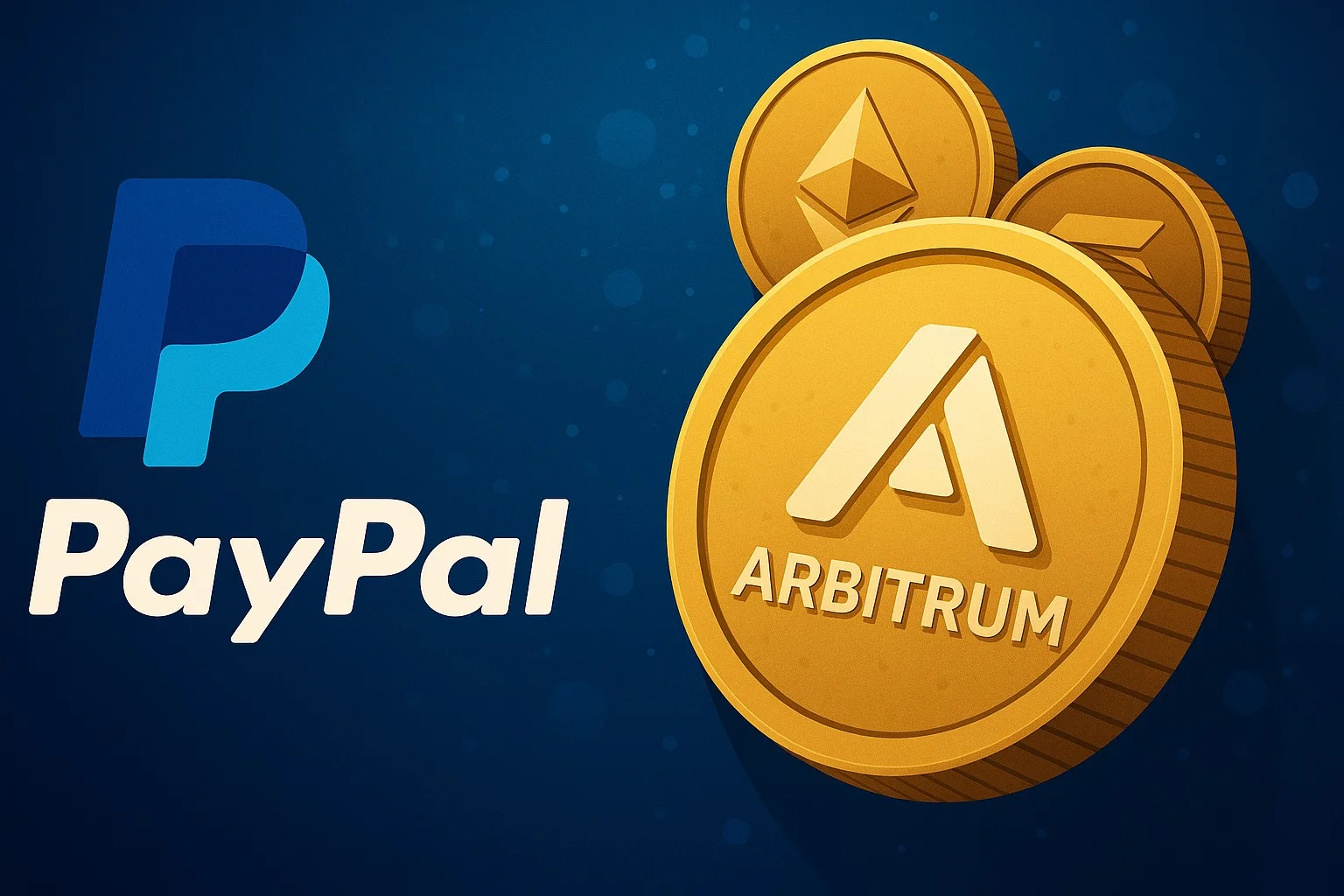
BNB Comments and Price Analysis July 16, 2025
BNB/USDT Technical AnalysisOn the chart, it can be clearly seen that there are two distinct ascending channels affecting the price of the coin—one of which is a wider major channel (blue), based on the tips of the wicks, while the other is a much narrower minor channel (orange), based on the candle bodies. It must be stated that both of these channels are crucial for determining price direction.BNB is currently trading in an area where both the minor falling channel and the horizontal resistance level intersect. The price zone of $688 – $699 appears to be a strong resistance area that has been tested multiple times. If this zone is broken to the upside, the first major target will be the $734 level. If $734 is surpassed, the upper border of the major channel can be technically targeted.On the other hand, the level of $658 could act as support if the price is rejected from the current resistance zone. Below $658, the next support levels to watch are $630 and then the stronger support of $620. A drop below these levels would signal a break of the minor channel and could push the price toward the lower border of the major channel.Despite the positive outlook, price action in this region will be decisive for both short- and mid-term direction, as this is the zone where both channel and horizontal resistance meet. Rising Trend Structure Summary:Both the major and minor ascending trends are in effect.The price is testing the resistance zone at $688 – $699.If broken upwards, the first target will be $734 and potentially the upper border of the major channel.In case of a pullback, support levels to follow are $658 → $630 → $620.The channel patterns support a positive price outlook.These analyses, not offering any kind of investment advice, focus on support and resistance levels considered to offer trading opportunities in the short and medium term according to the market conditions. However, the user is responsible for their own actions and risk management. Moreover, it is highly recommended to use stop loss (SL) during trades.

Citigroup's Stablecoin and Crypto Attack: Wall Street's Race Continues
Citigroup, the third-largest bank in the US, is preparing to make another move into the cryptocurrency space. According to a Reuters report, the bank's CEO, Jane Fraser, stated during its latest earnings call that they are evaluating the possibility of developing their own stablecoins and tokenized deposit solutions.According to Fraser, a potential asset called the "Citi stablecoin" is central to the bank's cryptocurrency strategy. However, Fraser emphasized that the real opportunity lies in tokenized deposits.However, Citigroup is not only considering issuing its own assets; it is also considering providing reserve management services for stablecoins and developing custody solutions for cryptocurrencies. This aims to become both an infrastructure provider and a custodian for digital assets.JP Morgan has made a similar moveThese developments indicate the growing interest in stablecoins not only from Citigroup but also from Wall Street in general. As we recently reported, Jamie Dimon, CEO of the renowned Wall Street bank JPMorgan Chase, made a similar statement, stating that the bank, which had long distanced itself from cryptocurrencies, would now participate in stablecoin and deposit token projects. It was even reported that JPMorgan plans to launch a digital asset called "JPMD" on the Base blockchain.Another important institution joining the stablecoin race is the Depository Trust & Clearing Corporation (DTCC), the leading US financial clearing and settlement agency. Last month, it was revealed that this institution is also working on its own stablecoin project.This momentum on Wall Street parallels political pressures in the US to regulate and institutionalize stablecoins. Former President Donald Trump has openly expressed his support for stablecoins and continues to rally support by meeting with Republican members of Congress. The GENIUS Act (Guiding and Establishing National Innovation for U.S. Stablecoins), which passed the Senate last month, is currently on the House floor. Although the initial vote failed to progress, it is expected to be resubmitted to a vote in the coming hours thanks to pressure from Trump.Geoffrey Kendrick, Head of Digital Assets Research at Standard Chartered, stated that 90% of his recent discussions in Washington, New York, and Boston have been about stablecoins. According to Kendrick, when the stablecoin market reaches $750 billion by the end of 2026, these assets will begin to directly impact the traditional financial system. Currently, the total market capitalization of stablecoins is $257 billion. Biggest stablecoins
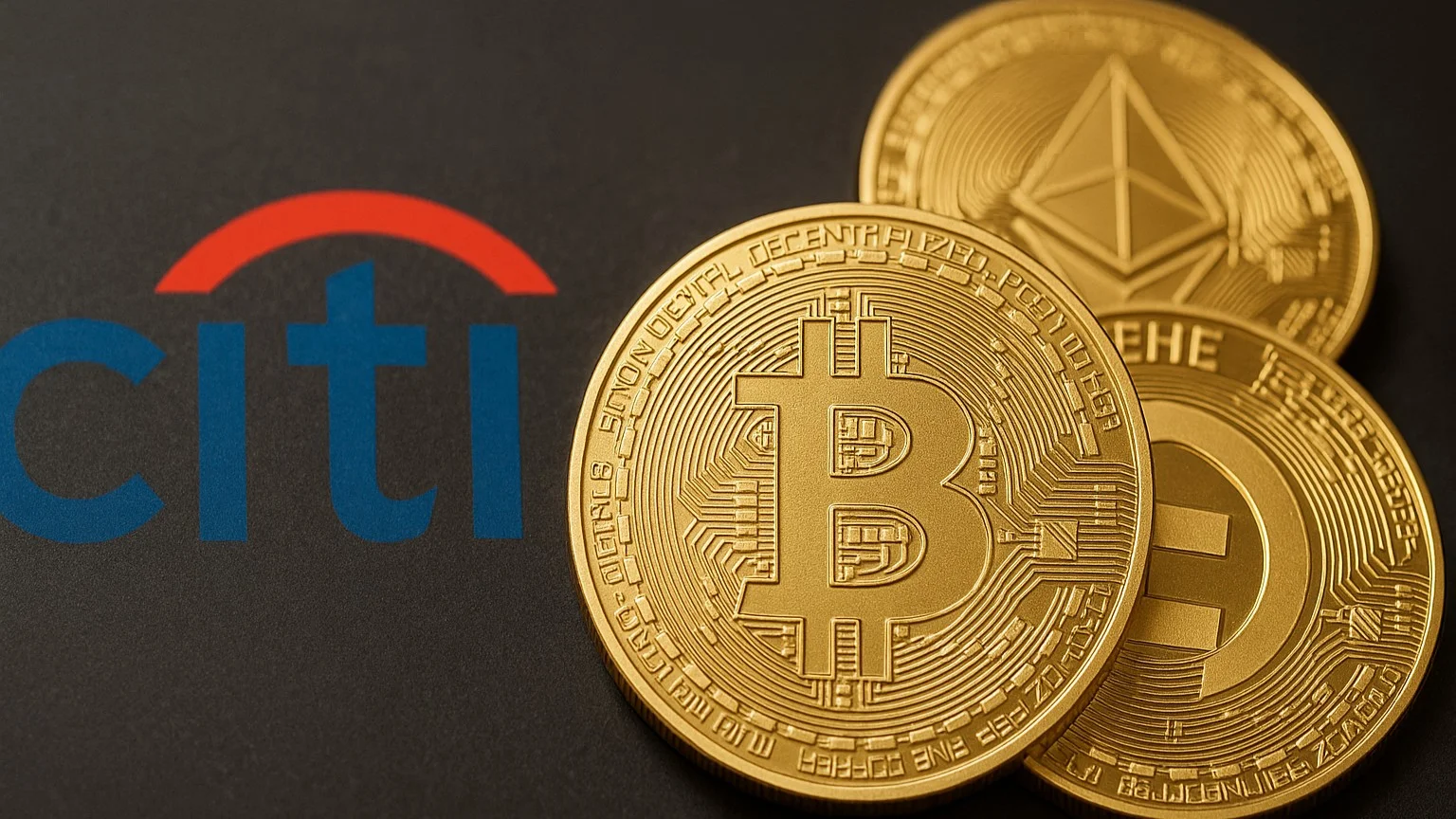
$27 Million Attack on Crypto Exchange: These 11 Coins Were Stolen!
Cryptocurrency exchange BigONE announced that it suffered a loss of approximately $27 million following an attack on its hot wallets on July 16, 2025. However, the platform stated that user funds were safe and that all losses would be covered.According to BigONE's statement, the attack was discovered early in the morning thanks to "unusual activity." Technical investigations revealed that the incident was a third-party attack, carried out through the hot wallet infrastructure. The company reported that it had identified the attack path and isolated the vector. Extensive loss: BTC, ETH, SHIB, and moreAmong the assets lost in the attack were large volumes of cryptocurrencies. According to the statement, the stolen assets include:120 BTC350 ETH9.5 billion SHIB7.1 million USDT (multi-chain)538,000 DOGE1,800 SOL1 WBTC20,730 XIN15.7 million CELR25,487 UNI16,071 LEOIt was determined that the attackers attempted to move the funds across multiple blockchain networks, including Bitcoin, Ethereum, Tron, Solana, and BNB Chain. Blockchain security firm SlowMist stepped in at this point and began tracking the assets and is working with the exchange to manage the process.Although the attack targeted the hot wallet infrastructure, according to BigONE and SlowMist, the private keys of the wallets were not affected. SlowMist stated in a statement that the attackers gained access to the exchange's infrastructure and altered the logic of some risk control systems, enabling unauthorized transfers. This is described as a "supply chain attack": external malware has been inserted into the system, manipulating transaction logic.Full compensation to usersBigONE has pledged to cover all losses through its own internal reserves and external borrowing. User balances will be fully protected, particularly through the use of high-liquid assets such as BTC, ETH, SOL, USDT, and XIN. The exchange stated that deposits and trading operations will be reactivated soon. However, it was stated that withdrawals will be postponed until additional security updates are completed. The exchange also expressed its regret for the impact of this incident on users and emphasized that all details of the investigation will be shared transparently.ZachXBT, a well-known on-chain researcher in the crypto world, showed little empathy towards BigONE. In a post on X (formerly Twitter), he claimed that the exchange had previously processed significant volumes of illegal activities such as "pig butchering" scams, fake investment projects, and romance scams. Therefore, he stated that he did not regret the losses suffered by the exchange. Meanwhile, according to market data, BigONE attracted attention with a trading volume of $684 million in the 24 hours following the incident. Founded in China in 2017, the exchange currently operates from the Seychelles.

ETHFI Comments and Price Analysis July 16, 2025
ETHFI/USDT Technical OutlookLooking at the ETHFI chart, we see that the wide-angle downtrend pattern previously analyzed has broken upwards. Additionally, it is clear that the price of the coin has consolidated sideways for a while after the breakout. Moreover, the price has tested a new downtrend line running at a tighter angle. This area is a key zone for determining the short-term direction.The price is now trading at the downtrend resistance level of $1.16 and is having difficulty breaking above it. In case of a breakout, the levels of $1.43 and $1.56 will be the next resistance targets. These levels correspond to previous formation peaks and horizontal resistance zones.In the event of a possible pullback, the price is expected to hold around the $1.12 level initially, followed by $1.00 as a psychological support. Below this, the support levels of $0.880 and $0.807 should be monitored. These two final levels are important as they coincide with horizontal support and previous price action zones.A broader upward movement could emerge for ETHFI if the current downtrend breaks with momentum. Otherwise, this trendline will continue to act as resistance. Falling Channel Formation Summary:The wide descending trend was broken, and the price is now testing a tighter trendline.Current resistance: $1.16 → If broken, targets are $1.43 and $1.56Support levels in case of pullback: $1.12 → $1.00 → $0.880 → $0.807If the current trend breaks, bullish momentum could accelerate; if not, downward pressure may continue.These analyses, not offering any kind of investment advice, focus on support and resistance levels considered to offer trading opportunities in the short and medium term according to the market conditions. However, the user is responsible for their own actions and risk management. Moreover, it is highly recommended to use stop loss (SL) during the transactions.

OP Comment and Price Analysis July 15, 2025
OP Technical AnalysisIt is clearly seen on the chart that the falling wedge formation has been broken to the upside. Following this breakout, the coin pulled back to the upper border of the wedge and completed a perfect retest. It is evident that Optimism is now accumulating and trading sideways without strong momentum.The technical outlook of the coin can be considered positive as long as it holds above the trend zone where the retest occurred. Resistance levels of $0.720 → $0.743 → $0.817 → $0.880 can be targeted if the price regains momentum in the short term.In the event of a correction, the first support level to monitor would be $0.660, which aligns with the retest area after the breakout. Below this support, the levels of $0.605 → $0.587 → $0.544 could serve as additional support zones.It is well known that a wedge formation is inherently a reversal pattern, and after a successful breakout, targets can typically extend upward by the length of the formation. Therefore, the bullish outlook remains valid as long as the price stays above the trendline. Falling Wedge Fracture Summary:Falling wedge formation broke upwards.A perfect retest followed the breakout.The price is currently accumulating.If held above, the price can trend higher.Resistance levels to watch: $0.720 → $0.743 → $0.817 → $0.880Support levels in case of a pullback: $0.660 → $0.605 → $0.587 → $0.544These analyses, not offering any kind of investment advice, focus on support and resistance levels considered to offer trading opportunities in the short and medium term according to the market conditions. However, the user is responsible for their own actions and risk management. Moreover, it is highly recommended to use stop loss (SL) during the transactions.

WLD Comments and Price Analysis July 15, 2025
WLD/USDT – Daily Technical AnalysisLooking at the WLD chart on the daily timeframe, we see that the price is rising within a falling wedge formation and reconnecting with the upper resistance line of this pattern. It is well known that such a formation usually tends to break out upwards in the end. The price is currently trading around $1.127, which coincides with this trend resistance.A breakout of this resistance could trigger a bullish rally toward higher levels such as $1.225 → $1.550 → $1.960 → $2.130 in the short term. If these resistance levels are broken with strong momentum, we can say that $4 could be the mid-term price target.However, if the price gets rejected and pulls back from this resistance level, the first support to follow would be $0.916, below which lies a strong support at $0.792.If the falling wedge formation breaks upward and holds, then WLD could enter a strong mid-term uptrend. Summary:A falling wedge formation is visible on the chart.The price just tested the upper border trend resistance.If broken above, resistance levels of $1.225 → $1.550 → $1.960 → $2.130 should be followed.The wedge formation’s mid-term target is $4.In case of a pullback, $0.916 and $0.792 should be watched as key supports.These analyses, not offering any kind of investment advice, focus on support and resistance levels considered to offer trading opportunities in the short and medium term according to the market conditions. However, the user is responsible for their own actions and risk management. Moreover, it is highly recommended to use stop loss (SL) during the transactions.

What is SPX6900 (SPX)?
The crypto world has been attracting attention with its entertaining and creative projects in recent years. One of the most striking examples of this is meme coins. These projects, often emerging with humorous themes, thrive on community power and often offer an alternative perspective to the seriousness of traditional finance.In this context, one project that has recently stood out with its name and approach is SPX6900 (SPX). So, why is "SPX" in this project's name? In the traditional finance world, the abbreviation "SPX" is known as the ticker symbol of the S&P 500 index, which represents the 500 largest companies in the US and is closely followed by investors. This index, which includes giants such as Apple, Microsoft, Amazon, and Tesla, is considered a key indicator reflecting the overall performance of the American economy.SPX6900, however, makes a direct reference to this symbol. The addition of "6900" to its name offers an ironic and exaggerated comparison to the S&P 500. This approach lends the project a humorous touch while also mocking traditional financial structures. But SPX6900 isn't just about its name. Its references to technology, easily spreadable content on social media, and community-centric structure have attracted attention. This has both generated interest within the crypto community and attracted the attention of a wider audience.In this article, we'll take a closer look at what SPX6900 is, its technical structure, and the reasons for its widespread popularity. Rather than praising or criticizing the project, we'll attempt to objectively understand its approach.Definition and Origin of SPX6900If you're wondering what SPX6900 is, it's a meme-focused cryptocurrency project. SPX6900 (SPX) is a cryptocurrency operating on the Ethereum network. With a total supply of 1 billion tokens, approximately 930 million of these tokens are currently in circulation. This highly volatile token can be bought and sold on various platforms, including decentralized exchanges like Uniswap V2 and Aerodrome. With a market capitalization of approximately $10 million, SPX's price fluctuates largely based on market sentiment and general cryptocurrency trends.SPX6900 (SPX) is primarily used as a buy-sell token. This means investors aim to profit from price fluctuations by buying and selling SPX on both centralized and decentralized cryptocurrency exchanges. Additionally, it offers opportunities to generate interest through spot trading or use tokens as collateral. However, high-risk investment instruments like perpetual (futures) or ETF/leveraged transactions are not recommended for inexperienced users.Users wishing to trade SPX must first create a crypto wallet (e.g., Trust Wallet). Then, Ethereum (ETH) is transferred to the wallet from an exchange like Binance. These ETH can be exchanged for SPX tokens by connecting to a DEX like 1inch. spx6900.com The SPX token can also be easily added to a MetaMask wallet. This allows users to view their token balances and easily trade on DEXs. SPX can also be traded with other cryptocurrencies on platforms like Uniswap V2 and Aerodrome.In short, the primary use of the SPX6900 is investment and trading. Users aim to profit by capitalizing on price fluctuations and actively trade the SPX token on various exchanges for this purpose.The History of the SPX6900: Major MilestonesBehind every successful project is a story worth telling and unforgettable milestones. The SPX6900 has also quickly gained a unique and colorful history. Here are the key milestones of the SPX6900 and the answer to the question of when it was released:August 2023 - Launch and initial community growth: The SPX6900 was released in August 2023 by the mysterious development team. This launch was a critical time for the project's first seeds and the formation of its community. Although initially launched with a small audience, the project's humorous concept and the humorous narrative behind it spread quickly by word of mouth.Viral posts on social media platforms like X (Twitter) and Telegram: Social media played a key role in the SPX6900's growth. Platforms like X (Twitter) and Telegram, in particular, were the primary channels that enabled the project to become a viral cryptocurrency. The SPX6900's creators and community attracted attention with humorous posts, memes, and sarcastic commentary on traditional financial markets. Concepts like "flipping the S&Ps" quickly became an inside joke within the community. Humorous content featuring references to figures like Elon Musk, the US Federal Reserve (Fed), and even US President Donald Trump exponentially increased the project's reach on social media.Starting trading on DEXs: Following its launch, SPX6900 began trading on decentralized exchanges (DEXs). Listing on leading DEXs like Uniswap, Jupiter, and Aerodrome increased the token's liquidity and allowed it to reach a wider investor base. This gave anyone curious about the SPX6900 coin the opportunity to experience firsthand the benefits of the coin.Short-term market capitalization increase and remarkable volumes: One of SPX6900's most striking achievements was its rapid market capitalization increase and remarkable trading volumes after its launch. Despite the high volatility inherent in memecoins, SPX6900 has established a solid market position thanks to its strong community support and constantly updated humorous content. This rapid rise has caught the attention of many experts and investors analyzing SPX tokens, prompting them to place SPX6900 on their watchlists.Why is SPX6900 Valuable?What is the value of a meme coin based on? For many, this question may sound like a lighthearted joke. However, answering the question of why is the SPX6900 valuable helps us understand the dynamics of the modern crypto ecosystem and the unique appeal of memecoins. Several key features distinguish the SPX6900 from others and add value to it:Strong Community and Viral GrowthSPX6900's greatest asset is undoubtedly its strong community support. Known as the "people's coin" in the crypto world, memecoins thrive when their communities unite around a shared sense of humor and shared goals. SPX6900 perfectly fits this principle. The community's energy, creativity, and desire to share the project's humor fuel its potential for viral growth. This, in turn, attracts new participants and continually expands the project's reach. As a community-based coin, the SPX6900's value is directly proportional to the strength and activity of its community. Social media-friendly with its humorous and technology-themed content that pokes fun at the S&P 500The SPX6900 pokes fun at the seriousness of the traditional financial world by blending its unique humor and technological references. The concept of "flipping the S&Ps to 6900" is not only humorous but also tells a memorable story that spreads easily on social media. The number "6900," referring to GPU model numbers, attracts the attention of tech enthusiasts, while the project's overall technology-themed humor makes it more shareable and engaging on social media platforms. This is a key marketing strategy that shouldn't be overlooked when analyzing the SPX6900 project.The S&P 500 is a frequently used index in the traditional financial world, representing the performance of the 500 largest companies traded on the US stock exchange. This indicator, used for many years by investors to track the general direction of the market, is a symbol of corporate seriousness and established financial structure. The SPX6900 stands out as a project that clearly breaks with this structure, ironically questioning the meaning of the S&P 500. The phrase "6900 is more than 500" on the official website is also noteworthy. Other content on the site continues this approach. With phrases like "Go check for SPX6900 behind your walls. Go look for SPX6900 in your heart," the project claims to become a cultural phenomenon rather than a financial instrument.Low Supply, High Volatility ModelSPX6900 has a limited total supply of 1 billion (1,000,000,000) tokens. Its circulating supply is approximately 931 million. This limited supply could potentially put upward pressure on the price if demand increases. This low supply, high volatility token model is a typical characteristic of the memecoin market and presents an attractive opportunity for speculative investors. Due to market dynamics, price movements can be quite rapid and sudden, carrying both high profit potential and risk. Furthermore, the project's roadmap includes deflationary mechanisms such as token burns, which could contribute to a further decrease in supply and an increase in value in the long term.SPX6900 Token FeaturesThe SPX6900 token features also contribute to the project's value. The coin goes beyond being just a memecoin and offers some important functionalities:Governance: SPX holders can vote on decisions regarding the future of the project, giving them the authority to direct it.Transaction Fees: SPX tokens can be used as fees for certain intra-ecosystem transactions.DeFi Integration: SPX has the potential to integrate with decentralized finance (DeFi) protocols, creating opportunities such as liquidity pools and lending/borrowing.Cross-Chain Functionality: Although based on Ethereum, SPX can be transferred between different blockchains, such as Solana and Base, via the Wormhole Bridge, increasing its accessibility.Staking: The inclusion of staking (token locking) mechanisms in the project's future roadmap could offer SPX holders the opportunity to earn passive income. This allows them not only to hold tokens but also to earn rewards by contributing to the ecosystem.These features indicate that the SPX6900 coin has the potential to offer tangible benefits for the future. Embracing meme coin culture and offering an entertaining investment experienceSPX6900, embracing the philosophy that "cryptocurrency doesn't have to be serious," offers investors not only a financial instrument but also a fun and interactive experience. It represents a more accessible and humorous side of the cryptocurrency market than traditional finance. This is increasing its popularity, especially among a young and dynamic investor base. With its unique humor and community spirit, SPX6900 allows investors to become part of a "movement."When all these factors come together, it becomes clear that SPX6900 is more than just a digital asset; it's a cultural phenomenon and offers a unique value proposition. When asked what SPX coin is, it wouldn't be wrong to say it's the embodiment of a community, a sense of humor, and a market stance.SPX6900 goes beyond being just another meme coin and offers a fresh perspective on the crypto market. When examining the SPX6900 project, it's clear how the humorous and technological elements underlying the project are intertwined. The project's central theme is a playful and exaggerated narrative that pokes fun at the S&P 500 index, the symbol of Wall Street. The idea of "flipping the 6900 S&Ps" is essentially a rebellion against the complexity and sometimes tedium of traditional finance.The secret to the project's success lies largely in its absurdist humor and the construction of its self-referential universe. Memes, witty posts, and the concept of "meme math" spread across social media platforms quickly made SPX6900 popular. The community revels in being a part of this humorous narrative, further fueling the project's virality.As an ERC-20 memecoin, SPX6900 leverages the reliability of the Ethereum network and, with cross-chain support, opens up to different ecosystems. This technical flexibility increases the project's accessibility, while exaggerated science fiction-themed whitepaper titles like "Quantum-Infused Financial Paradigms" reinforce the project's overall humorous identity. In fact, even the whitepaper reflects the project's playful spirit; Expressions like "creating virtual experiences that mimic the real world" convey the message that the SPX6900 is not just an investment tool, but also a form of digital performance art. Ultimately, the SPX6900 is a memecoin that eases the seriousness of the crypto world, prioritizing fun and community.Who is the Founder of SPX6900?In the crypto world, anonymity can sometimes increase a project's mystique, while other times it can raise questions about transparency. So, who is the founder of SPX6900? The answer to this question, as with many meme coin projects, is somewhat mysterious.Developer team is anonymous: The development team behind SPX6900 is anonymous. This is quite common in the meme coin ecosystem and can reinforce the perception of the project as an "investor project." Keeping the identities of the developers secret underscores the project's decentralization and community-driven structure. Anonymity can also be seen as a factor that encourages community ownership and growth without dependence on any central figure.A decentralized governance approach has been adopted: This means that development and direction decisions for the project are made by a broad community, not by a single person or group. This structure makes the project more resilient and more resistant to censorship.It has a structure driven by community contributions: The existence of an anonymous team doesn't mean that the SPX6900's development rests entirely on the shoulders of the community. On the contrary, the project thrives on community contributions. This means community members can directly contribute to the project's progress with their ideas, content creation, marketing efforts, and even support for technical development. This makes the SPX6900 a truly vibrant and dynamic ecosystem.DAO-like decision-making mechanisms are planned: To further reinforce the SPX6900's decentralized governance approach, DAO-like decision-making mechanisms are planned. This means SPX token holders will be able to participate in governance processes by voting on protocol changes, network upgrades, and other important decisions. This democratic approach allows the SPX6900 ecosystem to evolve according to the needs and preferences of the community. In other words, the future of the project is shaped in the hands of its holders. This is also one of the most striking features of the SPX6900 token. Frequently Asked Questions (FAQ)Below are some frequently asked questions and answers about the SPX6900:What is SPX6900, and what network does it run on?: SPX6900 is a memecoin-focused cryptocurrency project that humorously references the S&P 500 index. It was originally developed on the Ethereum network using the ERC-20 memecoin standard, but can also be traded on other networks like Solana and Base via the Wormhole bridge.What is the purpose of SPX6900?: The main goal of SPX6900 is to bring humor and entertainment to the crypto world while also uniting a strong community. By offering a humorous perspective on traditional financial markets, it aims to provide users with an investment experience that embodies fun and viral cryptocurrencies.A serious investment or just humor?: SPX6900 is a highly volatile memecoin, making it a speculative investment. While its primary purpose is to provide humor and community-driven entertainment, it also offers significant investment potential due to its limited supply and active community. However, like any memecoin, it also carries risks.Who is behind SPX6900?: The development team behind SPX6900 is anonymous. The project adopts a decentralized governance approach and, as a community-based coin, develops through community contributions and DAO-like decision-making mechanisms.Where can I buy it? Which wallets are compatible with it?: SPX6900 can be traded on decentralized exchanges (DEXs) such as Uniswap, Jupiter, and Aerodrome. As an Ethereum-based token, it can be used with all Ethereum-compatible wallets such as MetaMask and Trust Wallet. It is also compatible with wallets on the Solana and Base networks thanks to the Wormhole Bridge.What is the supply and circulation of SPX6900?: The total supply of SPX6900 is limited to 1 billion (1,000,000,000) tokens. Its circulating supply is approximately 931 million. The project's roadmap includes token burns (deflationary mechanisms), which could lead to a further supply reduction in the future. This places it in the low-supply, high-volatility category.Follow the JR Kripto content series for detailed guides on notable memecoin projects like SPX6900.
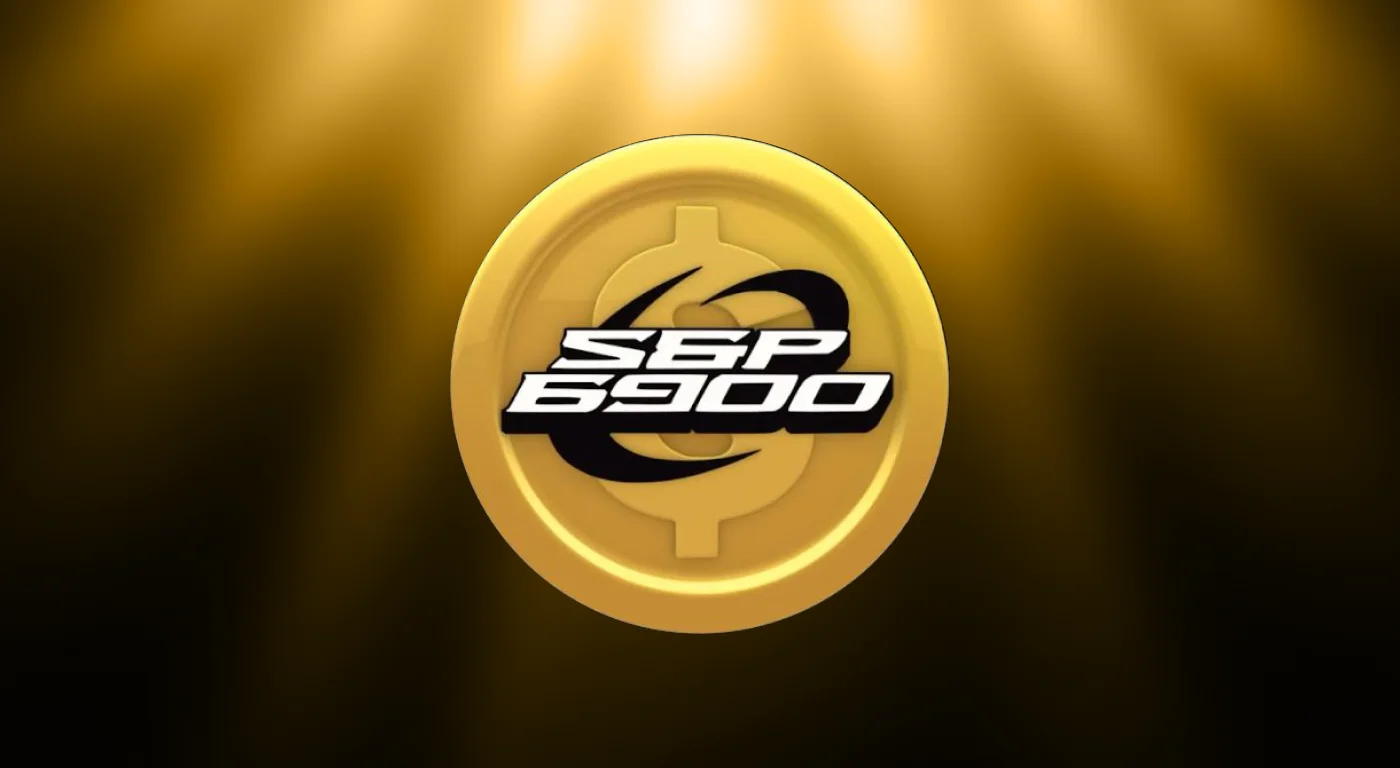
PENGU Comments and Price Analysis July 15, 2025
Pengu Technical Analysis: A Pause at the Resistance Following the RisePengu has been drawing attention recently with a series of corporate interactions on social media. Following a tweet by Justin Sun the founder of TRON the price of the coin jumped swiftly. Later, Coinbase’s profile photo change to Pudgy Penguins NFT on its X account, and today’s use of the same theme by Trust Wallet, were among the developments triggering interest. Also, the acceptance of the spot ETF application for PENGU and the transfer of 265M tokens (approximately $6M) from the project wallet are among the other key factors influencing its price. As a result of these actions, the price of the token has approached critical levels. Now, let’s analyze the chart. Upward Channel Structure As seen on the chart on a daily timeframe, the price of the token has broken out of the downtrend with a Breakout of Structure (BOS) and then a Market Structure Breakout (MSB). The market structure’s complete upward reversal has thus been confirmed. It is clearly seen that this pattern, beginning in April, moved parabolically in July, reaching the upper border of the ascending channel and being rejected by the resistance level of $0.0330. This level is a key zone as it has historically been an area of concentrated sell pressure. If the price can break this resistance and see daily closings above it, the levels of $0.035–$0.04 and $0.047 could be the next price targets.In case of a pullback, on the other hand, the first support level to follow will be $0.0191, which is technically a strong support as it is the zone of a Support Resistance Reversal (SR Flip). In case of deeper corrections, the levels of $0.0171 and $0.0131 will be major support levels.These analyses, not offering any kind of investment advice, focus on support and resistance levels considered to offer trading opportunities in the short and medium term according to the market conditions. However, the user is responsible for their own actions and risk management. Moreover, it is highly recommended to use stop loss (SL) during the transactions.

Arcadia Finance Targeted: $3.5 Million DeFi Attack
Decentralized finance (DeFi) protocol Arcadia Finance was attacked for approximately $3.5 million due to a vulnerability discovered in the "Rebalancer" smart contract on the Base blockchain. This incident marked the platform's second major security breach, following a $455,000 hack last year.The attack was first detected by blockchain security firm Certik on the morning of July 15th. Certik announced that they detected suspicious transactions on the Base network and that the attacker initially seized approximately $1.6 million worth of assets. As time went by, the extent of the damage grew, reaching a total loss of $3.5 million. What is behind the Arcadia Finance attack?The attack stemmed from the improper validation of the swapData parameter in Arcadia's "Rebalancer" contract. According to a statement by security firm Hacken, the attackers exploited this vulnerability to execute unauthorized transactions and drain user funds. The seized assets included 2.3 million USDC, 227,000 USDS, and various amounts of WETH, EURC, AERO, and WELL tokens.The attacker began their operation by anonymously transferring funds via Tornado Cash on the Ethereum network. These funds were then bridged to the Base network, the attack contract was deployed, and exploitation operations were initiated within seconds. The obtained cryptocurrencies were converted to Wrapped Ethereum (WETH) and moved to the Ethereum mainnet. During this process, the attacker transferred 199 WETH and approximately 965 million AERO tokens. These transactions were spread across 12 different wallet addresses, making them difficult to trace.The Arcadia Finance team confirmed the attack in a statement on social media platform X, warning users to remove all asset manager permissions. They also recommended immediately disconnecting Rebalancer and Compounder connections.This latest incident has once again highlighted concerns about security vulnerabilities in the DeFi sector. In the first half of 2025, a total of $2.47 billion in losses were reported across just 344 incidents. Of these losses, $1.7 billion resulted from direct wallet attacks and $410 million from phishing attacks.Arcadia's operations on the Base network were shaped by the support of major investors like Coinbase Ventures. Each attack is critical to DeFi's institutional adoption, especially as enterprise-focused blockchains like Base integrate with major names like JPMorgan and Shopify.
